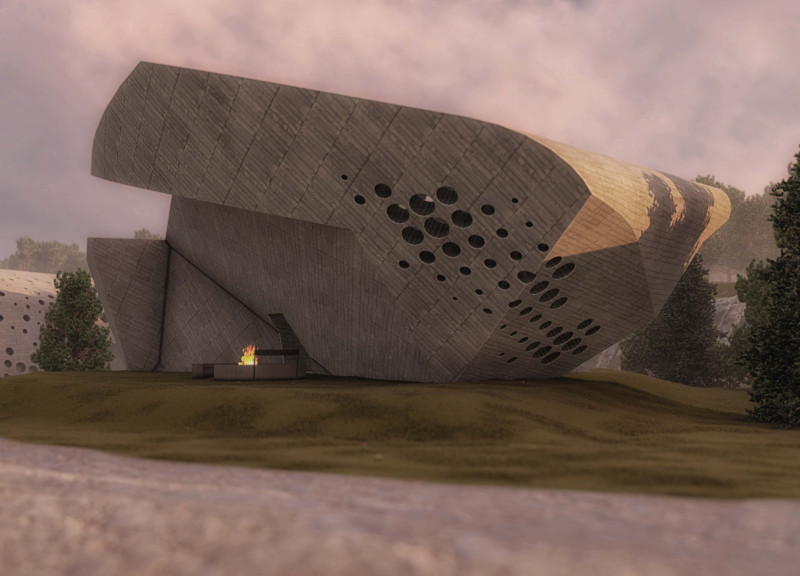5 key facts about this project
The design is a network of shelters located along the route from the Atlantic Ocean to the Black Sea, specifically for cyclists. These shelters are integrated into the landscape, providing a space for rest and recovery. The concept is centered on creating an environment that balances comfort and connection for those traveling through various terrains. The goal is to support and enhance the experience of each cyclist.
Program Organization
The shelters fall into three main categories: Private, Semi-Public, and Public. Each category addresses specific needs. Private objects feature basic amenities like beds, bathrooms, and showers. They create personal spaces where travelers can relax and recharge. This thoughtful organization ensures that comfort is a priority throughout the journey.
Social Interaction
Semi-Public objects are designed to facilitate social interactions. They include communal dining areas and bike repair stations, encouraging engagement among travelers. These spaces are meant for sharing meals, stories, and assistance, allowing people to connect with one another. This design element enhances community ties and enriches the cycling experience.
Transitional Spaces
A unique aspect of the design is the inclusion of interstitial spaces that connect the different shelter types. These areas appear between Private and Semi-Public objects, providing a transition zone that allows users to enjoy the outdoors while remaining sheltered. They serve as buffers that provide comfort without isolating individuals from the surrounding environment.
Resting Places
Public objects are designed as temporary stops for cyclists. They provide a space for travelers to take a break and appreciate the scenery. These shelters are accessible and serve all types of travelers, ensuring that everyone can find a welcoming spot during their journey. The focus on functionality creates a pleasant environment that encourages users to pause and reflect on their experience.
The design pays careful attention to the arrangement of spaces and user activities. Each shelter is positioned to balance comfort with the need for social interaction while respecting the natural setting. The result is a well-thought-out network that supports cyclists as they journey through various landscapes.






















































